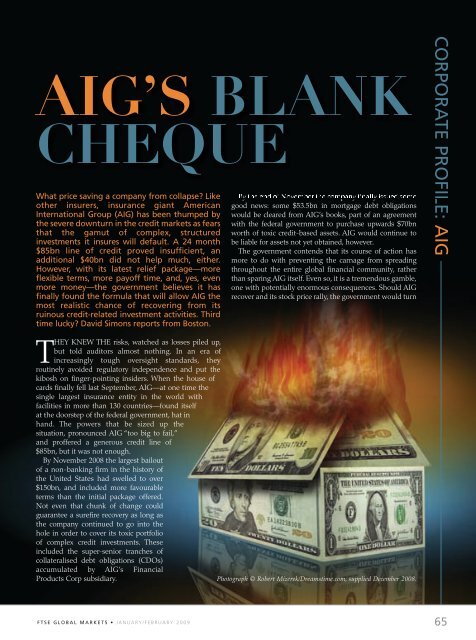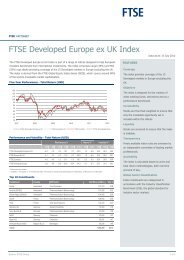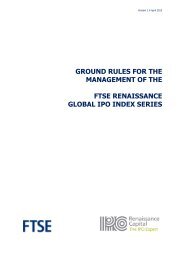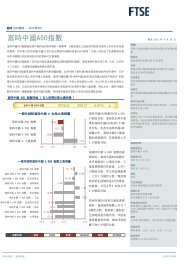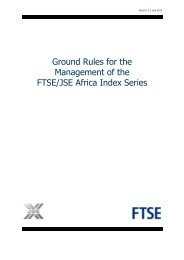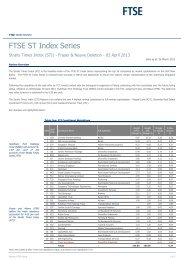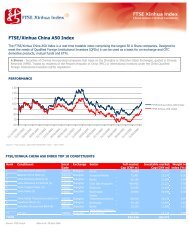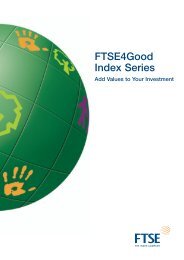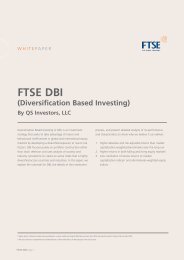You also want an ePaper? Increase the reach of your titles
YUMPU automatically turns print PDFs into web optimized ePapers that Google loves.
AIG’S BLANK<br />
CHEQUE<br />
What price saving a company from collapse? Like<br />
other insurers, insurance giant American<br />
International Group (AIG) has been thumped by<br />
the severe downturn in the credit markets as fears<br />
that the gamut of complex, structured<br />
investments it insures will default. A 24 month<br />
$85bn line of credit proved insufficient, an<br />
additional $40bn did not help much, either.<br />
However, with its latest relief package—more<br />
flexible terms, more payoff time, and, yes, even<br />
more money—the government believes it has<br />
finally found the formula that will allow AIG the<br />
most realistic chance of recovering from its<br />
ruinous credit-related investment activities. Third<br />
time lucky? David Simons reports from Boston.<br />
THEY KNEW THE risks, watched as losses piled up,<br />
but told auditors almost nothing. In an era of<br />
increasingly tough oversight standards, they<br />
routinely avoided regulatory independence and put the<br />
kibosh on finger-pointing insiders. When the house of<br />
cards finally fell last September, AIG—at one time the<br />
single largest insurance entity in the world with<br />
facilities in more than 130 countries—found itself<br />
at the doorstep of the federal government, hat in<br />
hand. The powers that be sized up the<br />
situation, pronounced AIG “too big to fail,”<br />
and proffered a generous credit line of<br />
$85bn, but it was not enough.<br />
By November 2008 the largest bailout<br />
of a non-banking firm in the history of<br />
the United States had swelled to over<br />
$150bn, and included more favourable<br />
terms than the initial package offered.<br />
Not even that chunk of change could<br />
guarantee a surefire recovery as long as<br />
the company continued to go into the<br />
hole in order to cover its toxic portfolio<br />
of complex credit investments. These<br />
included the super-senior tranches of<br />
collateralised debt obligations (CDOs)<br />
accumulated by AIG’s Financial<br />
Products Corp subsidiary.<br />
Photograph © Robert Mizerek/Dreamstime.com, supplied December 2008.<br />
F T S E G L O B A L M A R K E T S • J A N U A R Y / F E B R U A R Y 2 0 0 9<br />
By the end of November the company finally issued some<br />
good news: some $53.5bn in mortgage debt obligations<br />
would be cleared from AIG’s books, part of an agreement<br />
with the federal government to purchase upwards $70bn<br />
worth of toxic credit-based assets. AIG would continue to<br />
be liable for assets not yet obtained, however.<br />
The government contends that its course of action has<br />
more to do with preventing the carnage from spreading<br />
throughout the entire global financial community, rather<br />
than sparing AIG itself. Even so, it is a tremendous gamble,<br />
one with potentially enormous consequences. Should AIG<br />
recover and its stock price rally, the government would turn<br />
CORPORATE PROFILE: AIG<br />
65


